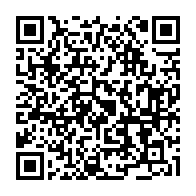AI and education
Tak Auyeung

The work is licensed under
a Creative
Commons Attribution-NonCommercial-ShareAlike 4.0 International
License.
Attendnace

LLM
- Large Language Model
- Language-based mimic
- Capable of abstraction
- Recognize and apply learned patterns
- Incapable of “hard logic”
- Garbage-in-garbage-out
Intrinsic limitations of LLM
- Linguistic-only.
- Do we think in words?
- Is creativity linguistic-only?
Q-Star
- New development from OpenAI
- The exact nature is not known
- Speculations:
- A-Star, combined with
- Q learning
- Should resolve some “hard logic” limitations
The point is…
- Development is fast
- Lots of active research both in academia and corporate world
- Moore’s Law is still alive, but aged
- AI will be more capable and accessible, period
Here we are
- What do our students need?
- How does AI integrate into what we do?
- What is our (human) value in education?
Challenges
- Students using AI to do their homework
- Can AI replace us?
- Can we use AI to enhance teaching?
- What matters in the end?
What matters in the end?
- Are our students hirable?
- Are our students responsible members of society?
- Are our students “educated”?
Will you hire our students?
- What do you expect them to accomplish at work?
- Is AI a useful tool you expect employees to use?
- If so, which part of a job still needs human intervention?
- How is AI utilized in the job?
What does Sir Christopher Pissarides have to say?

- IT jobs sow their “own seeds of self-destruction.”
- Some skills are less “replaceable by AI”:
- Managerial
- Creative
- Empathetic
- Really?
I’m sorry, Sir Pissarides
- Yeah, not really!
- AI can:
- distinguish human facial expressions better than an average person,
- generate images, music, writing, etc. in specific styles,
- “understand” rules, apply rules in situations, and do so while sounding empathetic.
Let’s try this again
- A LLM relies on massive training samples.
- If something is not well documented/discussed, a LLM cannot learn it.
- A LLM has no sensory input/association.
- A LLM does not understand hard logic.
What can (some) humans (still) do better?
- Critical thinking (application of hard logic).
- On-the-spot problem-solving (no prior examples, plus the application of hard logic).
- Abstraction, theorization. The recognition of systematic or cross-domain conceptual (as opposed to linguistic) pattern.
- Learning using few examples, or just the explanation of rules.
Curricula and SLOs
- What do we focus on?
- What to teach?
- How to assess?
- Bloom’s Taxonomy (from 1956!).
Bloom’s Knowledge
- still important, where to find information
- authority of the source of information
- reliability of the source of information
- not so much the memorization of information
Bloom’s Comprehension
- the relationship of pieces of knowledge
- if definitions, terms, etc. are nodes, comprehension is the mesh connecting the nodes
Bloom’s Application
- Was Benjamin Bloom right to put application between “comprehension” and “analysis”?
- Is “application” the same as “problem-solving”?
Bloom’s Analysis
- Given a problem/scenario and solution description, break it up and relate to concepts, definitions.
- Applicable to a problem/scenario description.
- Also, applicable to the qualification of a solution.
- Mapping a problem/scenario and solution description as instances onto the mesh of knowledge and comprehension
- The first step of problem-solving.
Bloom’s Synthesis
- Given the results of analysis, the derivation of actions/steps to achieve a target scenario.
- Think of the problem description as an initial state as a super-imposed mesh over the knowledge-comprehension mesh.
- Each action morphs this super-imposed mesh.
- How to morph the super-imposed mesh to match the final state, a solution as a super-imposed mesh?
- There may be multiple ways to achieve a target scenario.
Bloom’s Evaluation
- Compare and contrast the various ways generated in synthesis.
- Apply criteria and requirements that are applicable to compare alternatives.
- Also, a way to evaluate scenarios.
Designing assessment activities
- To deter/detect the use of AI tools
Contextualize questions
- Based on what we discuss in class…
- After watching this video on YouTube,…
- Describe your personal experience and relate it to…
In-person assessment
- In-person
- On-paper
- No electronics!
Google Doc
- Use edit tracking
- A human edit history should be obvious
- Ask Tak for ideas to use a script to measure metrics!
- Will need editor access
- Generate instructor owned document and share with students